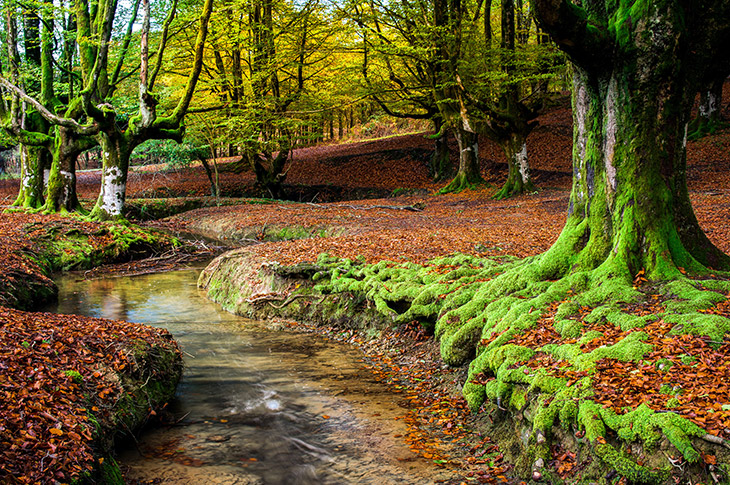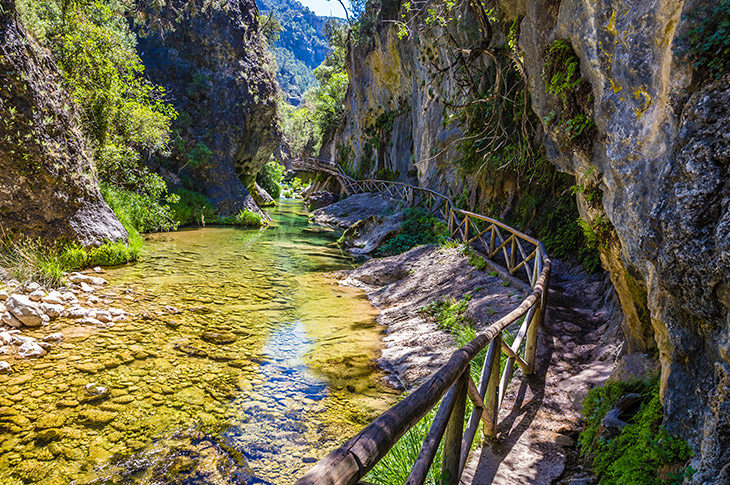Five destinations to travel across Spain and discover all the colors, peace, and traditions of fall
Experiences among mountains, beech forests, and vineyards invite you to walk, savor, and immerse yourself in rural surroundings
Fall transforms Spain into a unique mosaic of colors, smells, and distinctive textures: from the beech forests of the Basque Country to the volcanic landscapes of Catalonia, this season invites you to rediscover the country like you’ve never seen it before. This is the time for the grape harvest, for foraging mushrooms among fallen leaves, for walking along silent paths, and for listening to the rutting calls in the nature parks. With mild temperatures and fewer tourists, these months are the ideal time to plan a getaway immersed in authenticity and nature. Gorbea Nature Park (Basque Country). This protected natural area between Álava and Vizcaya reveals itself each fall in a mosaic of oaks, beeches, and poplars along marked trails crossing forests, pastures, and wetland areas. Spread out over nearly 50,000 acres, Gorbea is also a key destination for Basque mountaineering thanks to peaks like the mountain from which it takes its name. From the Otzarreta beech forest, you’ll enjoy access to some ideal routes for hikes, horseback rides, or cycling among peatlands, centuries-old trees, and recreational areas.

Vineyards after the harvest (La Rioja). After the harvest season, the vineyards turn reddish in Haro, Briones, Alfaro, and other towns along the Wine Route. Meanwhile, wineries like López de Heredia (Haro) and Marqués de Riscal (Rioja Alavesa) remain open for guided tours, tastings, and wine-therapy treatments. A host of establishments also offer tasting courses combined with walks among the vines, transforming the grape harvest into a first-class wine-tourism experience. La Garrotxa and the Fageda d’en Jordà (Catalonia). This volcanic region offers a combination of routes through dormant craters and beech forests like the Fageda d’en Jordà, where fall paints a landscape of unimaginable beauty. Here, all trails connect with medieval towns such as Santa Pau or Castellfollit de la Roca, allowing visitors to discover a so-called “volcanic cuisine”. What’s more, you can climb volcanoes like Santa Margarida, admire basaltic lava flows, and learn about local geology in the Volcanic Zone Nature Park. Sierra de Cazorla, Segura, and Las Villas (Andalusia). This vast nature park includes trails that run along rivers like the Guadalquivir and the Segura, crossing pine forests and rocky areas. Don’t miss the Torre del Vinagre Botanical Garden and Interpretation Center, where you can admire the endemic Cazorla violet. Hunting routes or guided tours to the rock paintings of Collado del Guijarral can also be organized, adding a cultural dimension to your journey.

Tejeda (Canary Islands). On the island of Gran Canaria, the village of Tejeda lies among such spectacular natural formations as the Roque Bentayga, and offers a series of archaeological routes leading to aboriginal caves like the King’s Caves. From the Cruz de Tejeda, you’ll enjoy panoramic views, while the Abraham Cárdenes Sculpture Museum and the Ethnographic Museum add a cultural element to enrich the fall experience.

